2.2 RECOGNIZING GENERAL GLOBAL CHARACTERISTICS OF THE TWIN TOWERS COLLAPSES
This is a good clip of the floor-by-floor nature of the ejections at the leading edge of the collapse front.
The clip is unique in that the floor-by floor nature of the collapse progression front is visible. The individual floors at the leading edge of the collapse front can be seen as staccato pulses. the detail of the clip is so good that the individual floors being affected are distinguishable. They can be counted and a collapse rate can be determined as number of floors destroyed per second.
The clips that capture motion of the collapse fronts the clearest are shown below:
WTC1:
WTC2:
Understanding the overall shape and particulate flow of the collapses as they appeared.
Each of the 8 walls demonstrated one of two types of particulate flow. Both types are shown in the image of WTC2 below.
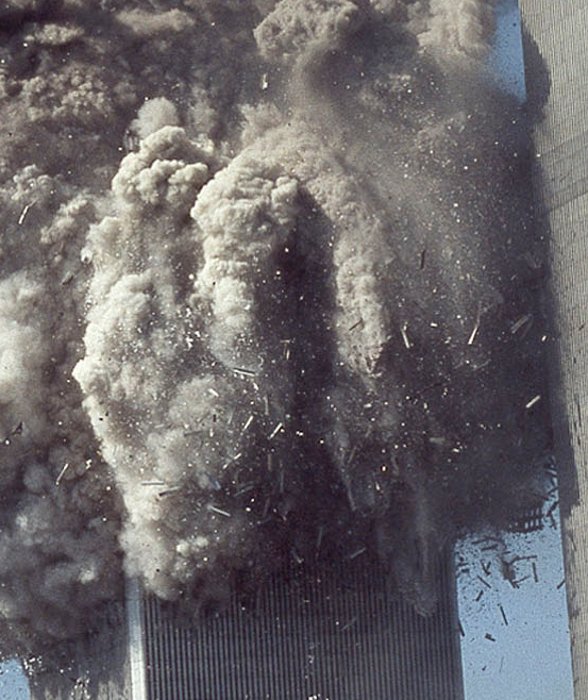
On the left side there are rows of "cotton-ball" ejections that eminate from the windows of the perimeter. They appear as organized rows and the "cotton" pattern is made by the particles coming out of the window grills along the perimeter.
On the right the particulate moves as falling streaks. These are made by particles trailing large pieces of falling debris.
The overall appearance of the collapses of WTC1 and 2 can be understood as a combination of these two types of particle flow.
In the picture above, the east face on the left and east side of the north and south faces are the only places where the cotton ball pattern is clearly visible moving down the building. And, with the gift of hindsight it is easy to understand why. That is the only section where the upper perimeter fell behind the lower perimeter during collapse initiation.
In the case of WTC1, the north, west and south faces failed in a way that the upper portions slid out and over the lower portions. This is why there is no side of WTC1 in which the cotton ball particulate pattern is clearly visible. The only glimpses of the the cotton ball ejections working their way down the perimeter floor by floor is along the NW corner or from camera angles that allow one to look behind the large streak patterns from falling debris.
Once again, please notice how the particulate flow takes the form of the rows of cotton balls formed by the window grillage on the left, and the particulate flow appears as long falling streaks on the right.
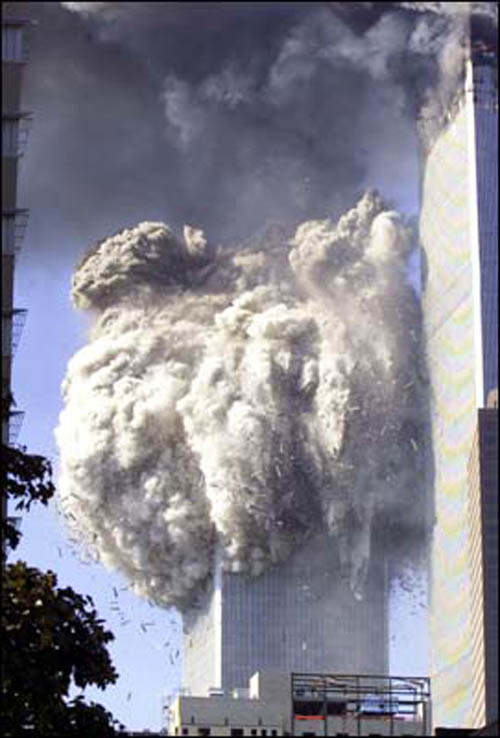
It means that the perimeter above the failure line fell outward on the right side, but the upper perimeter fell inward on the left.
When the upper perimeter falls inward, it gives a clear view of rows of ejections coming out floor-by-floor.
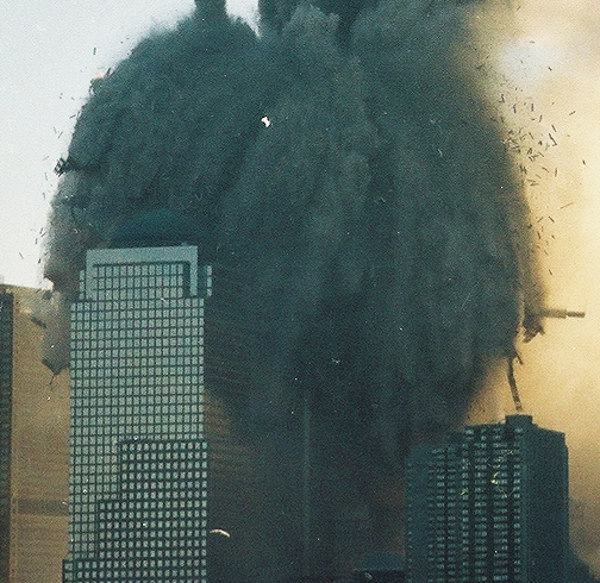
On the south side it is obvious that the falling streaks of particulate flow completely cover any cotton ball pattern.
In fact, the overall shape of the WTC1 particulate movement can be understood by noting that the upper perimeter walls fell out and over the lower perimeter walls on every visible side (north, west, south). As can be seen in these photos, WTC1 had long falling streaks covering all sides.
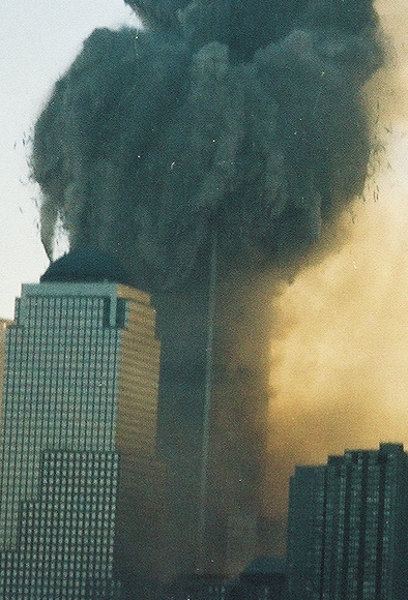
WTC1 is covered by downward streak patterns on all sides because the upper portion of each side fell out and over the lower portion. There is no other explanation.
http://www.sharpprintinginc.com/911/images/photoalbum/8/911_HighQualityPhotos305.jpg
Once again, 2 distinct types of particulate flow are visible, streaks and cotton ball patterns.
From this image one can already verify that the upper north wall fell out and over the lower portion because the streaks obscure the floor-by-floor ejection pattern through the window grills. The same logic shows the south wall acted the same way.
Once again, the pattern of how falling streaks obscure the floor-by-floor ejections when the upper perimeter fails out and over the lower perimeter is obvious (using what we know now):
http://www.sharpprintinginc.com/911/images/photoalbum/8/wtc1exp3.jpg
The type of particulate flow I call "cotton ball" are particles suspended in air which is forced through the window grillage system. The videos and images show it is air forced out the windows along the collapse front.
This type of pattern is obviously associated with floor-by-floor destruction at the collapse front.
If the NIST took the time to understand the visual evidence for the type of mass flow they were looking at, they would have asked simple questions like "Along the south wall, are the "cotton ball" ejection patterns distinguishable or are they obscured by streak patterns?"
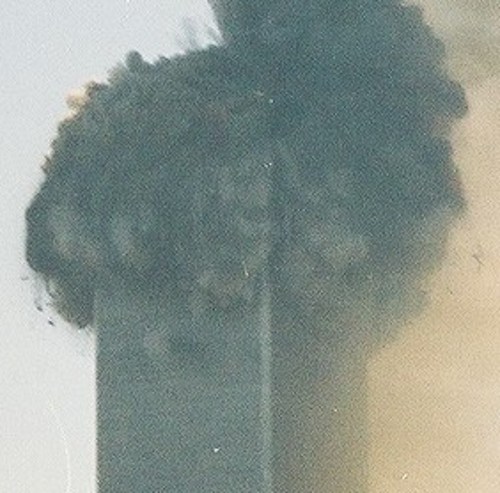
They could have made an effort to see whether the upper wall fell out and over the lower wall by using these images. They would have seen that their whole description of the initiation movement was incorrect years ago. If the forced air through the window grillage is obscured by streaks, it means the upper portion fell outward and is obscuring the view.
If they consider themselves experts on the collapses, there is no excuse for missing clues this large.
So, understanding the general shape of the particulate flow of WTC1 and 2 can be expressed as a few simple rules:
There are 2 general shapes that the particle flow seems to take: Streaks and "cotton ball" rows of air forced through the window grillage.
They are both easily distinguishable in all the images and video shown. This gif shows both types:
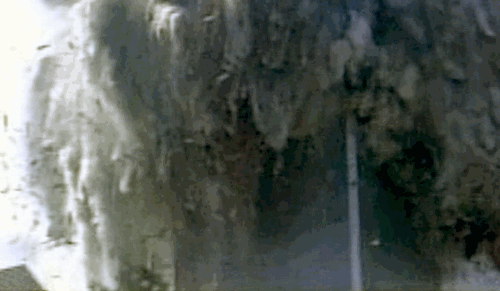
If the streak patterns obscure the cotton ball pattern, this means the upper perimeter wall fell out and over the lower part during collapse initiation. If the air forced through the window grillage is not covered by the streaks, this means the upper perimeter fell inside the lower perimeter.
These simple rules can be used to make sense out of seemingly chaotic images like this one:
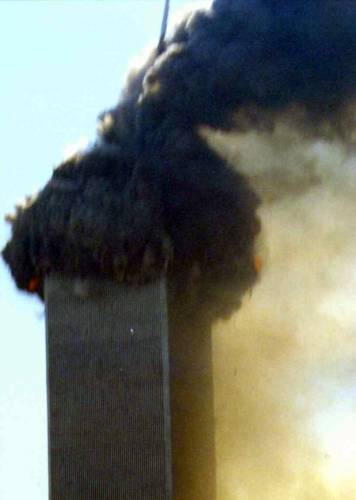
Even though the mass movement is completely obscured by the dust flow, one can still determine that the upper wall fell out and over the lower wall on both the west and north sides. Is the cotton ball pattern obscured or visible? It is covered over, so the upper wall fell out and over the lower wall.
Each of the 8 walls can be understood the same way. By examining whether the streak pattern covers the pattern of the forced air through the window grillage, seemingly chaotic images like this one make sense.
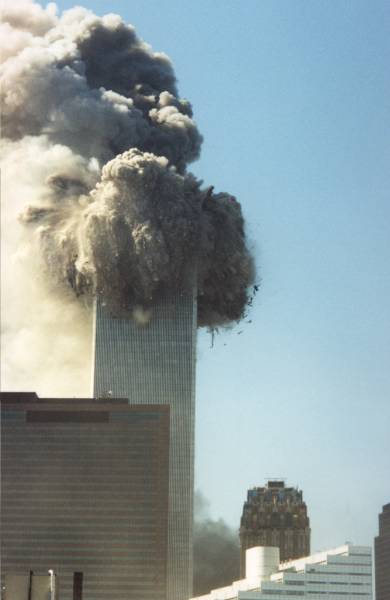
There is a lot of information within the chaos.